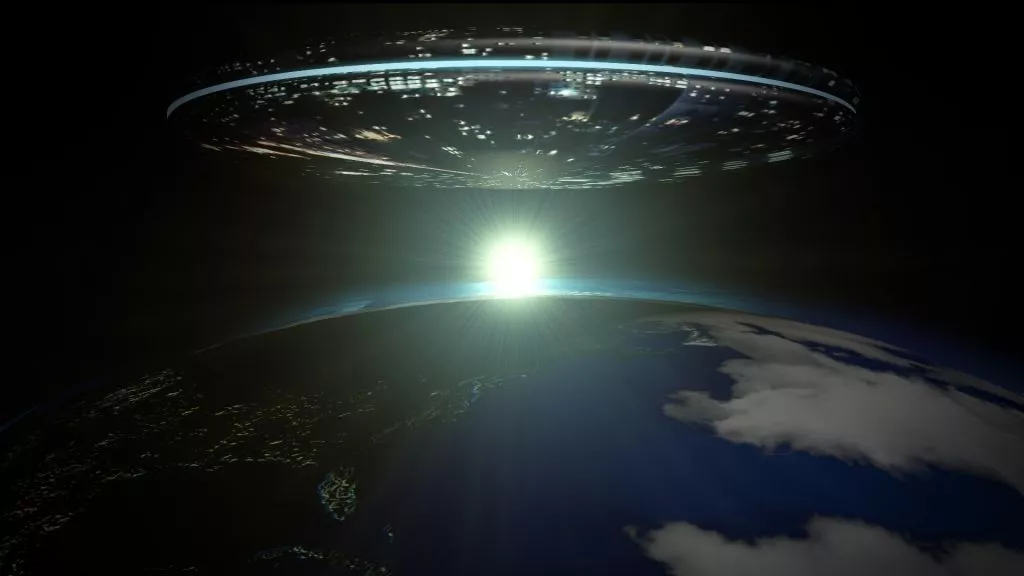The Milky Way is home to millions of potentially habitable planets — and approximately four of them may harbor evil alien civilizations that would invade Earth if they could, new research posted to the preprint database arXiv suggests.
The new paper, which has not yet been peer-reviewed, poses a peculiar question: What are the odds that humans could one day contact a hostile alien civilization that’s capable of invading our planet?
To answer this, sole study author Alberto Caballero — a doctoral student in conflict resolution at the University of Vigo in Spain — began by looking back at human history before looking out to the stars.
“This paper attempts to provide an estimation of the prevalence of hostile extraterrestrial civilizations through an extrapolation of the probability that we, as the human civilization, would attack or invade an inhabited exoplanet,” Caballero wrote in the study.
(Caballero is not an astrophysicist, but he has published a study on the infamous Wow! signal — a potential sign of extraterrestrial life — in the peer-reviewed International Journal of Astrobiology.
To reach his estimation, Caballero first counted the number of countries that invaded other countries between 1915 and 2022. He found that a total of 51 of the world’s 195 nations had launched some sort of invasion during that period. (The U.S. sat at the top of the list, with 14 invasions tallied in that time.) Then, he weighted each country’s probability of launching an invasion based on that country’s percentage of the global military expenditure. (Again, the U.S. came top with 38% of global military spending.)
From there, Caballero added each country’s individual probability of instigating an invasion, then divided the sum by the total number of countries on Earth, ending up with what he describes as “the current human probability of invasion of an extraterrestrial civilization.”
According to this model, the current odds of humans invading another inhabited planet are 0.028%. However, Caballero wrote, that probability refers to the current state of human civilization — and humans aren’t currently capable of interstellar travel. If current rates of technological advancement hold, then interstellar travel wouldn’t be possible for another 259 years, Caballero calculated using the Kardashev scale — a system that categorizes how advanced a civilization is based on its energy expenditure.
Assuming the frequency of human invasions continues to decline over that time at the same rate that invasions have declined over the last 50 years (an average of minus 1.15% per year, according to Caballero’s paper), then the human race has a 0.0014% probability of invading another planet when we potentially become an interstellar , or Type 1, civilization 259 years from now.
That may sound like very slim odds — and it is, until you start multiplying it by the millions of potentially habitable planets in the Milky Way. For his final calculation, Caballero turned to a 2012 paper published in the journal Mathematical SETI(opens in new tab), in which researchers predicted that as many as 15,785 alien civilizations could theoretically share the galaxy with humans.
Caballero concluded that less than one of the Type 1 civilizations — 0.22, to be precise — would be hostile toward humans who make contact. However, the number of malicious neighbors increases to 4.42 when accounting for civilizations that, like modern humans, are not yet capable of interstellar travel, Caballero told Vice News.
“I don’t mention the 4.42 civilizations in my paper because 1) we don’t know whether all the civilizations in the galaxy are like us… and 2) a civilization like us would probably not pose a threat to another one since we don’t have the technology to travel to their planet,” Caballero told Vice.
Four hostile alien powers doesn’t seem like a lot to worry about. Furthermore, the probability that humans might contact one of these malicious civilizations — and then be invaded by them — is vanishingly small, Caballero added.
“The probability of extraterrestrial invasion by a civilization whose planet we message is… around two orders of magnitude lower than the probability of a planet-killer asteroid collision,” he wrote in his paper — adding that planet-killing asteroids, like the one that doomed the dinosaurs, are 1-in-100-million-year events.
Though Caballero’s study poses an interesting thought experiment, the author admits his model has limitations. The invasion probability is based on a very narrow slice of human history, and it makes many assumptions about the future development of our species. The model also presumes that alien intelligence will have brain compositions, values and senses of empathy similar to those of humans, which may simply not be the case, Caballero told Vice.
“I did the paper based only on life as we know it,” he said. “We don’t know the mind of extraterrestrials.”
And by the looks of things, it’ll be at least a few hundred more years until we do.
Please remember we all have different opinions, Think Before You Speak or Write Something that is cruel to Others. After all, We are only Humans. Wishing you clear skies and wide eyes. To share your experiences or just leave a comment there is a area below. Read or listen.
We are the change the world has been waiting for!
Have you witnessed an unidentified flying object?
You are not alone. Whether you think UFOs are black projects, extraterrestrial craft, something else altogether, or just don’t know, again, you are not alone!
Unconditional love. The road we all get to walk. Unconditional love is like the sun.
WE ARE THE DISCLOSURE !~ WE HAVE NEVER BEEN ALONE
Love and Regards,
Thank You,
Nancy Thames
Source: Live Science.


